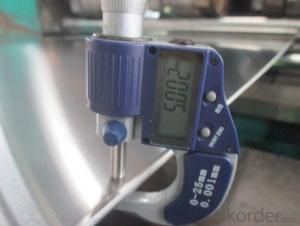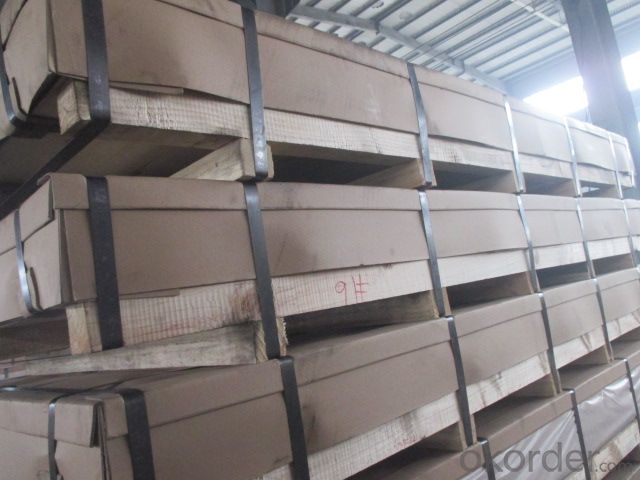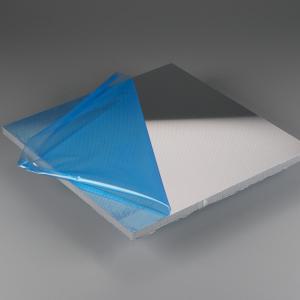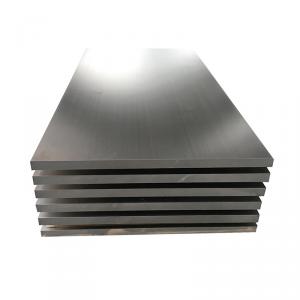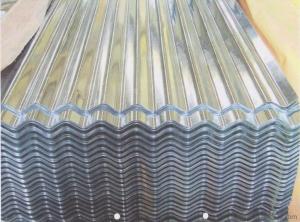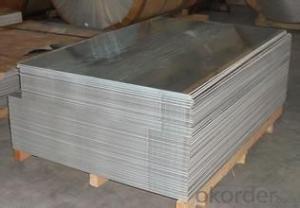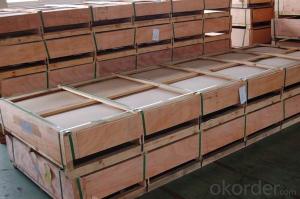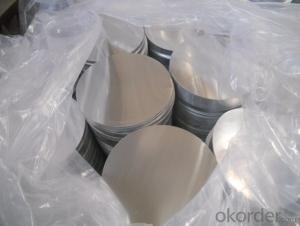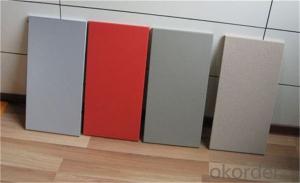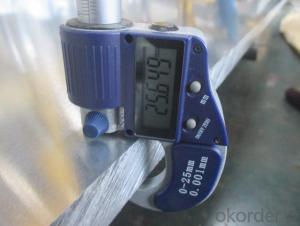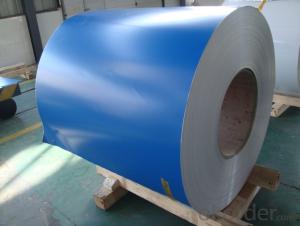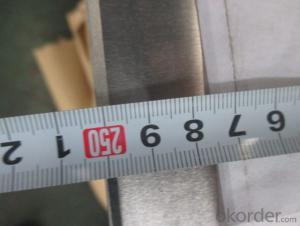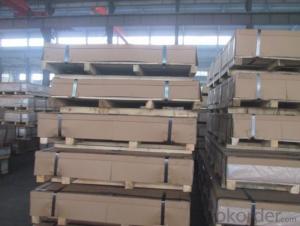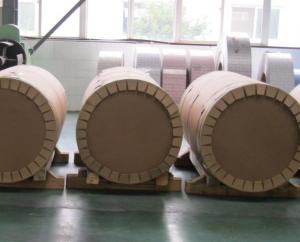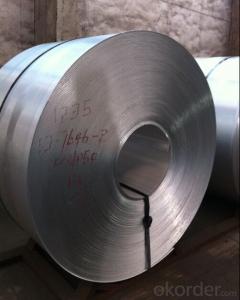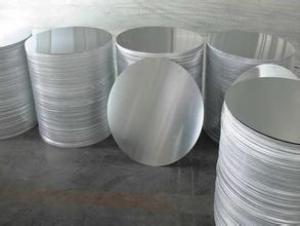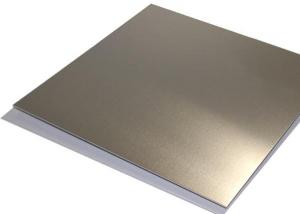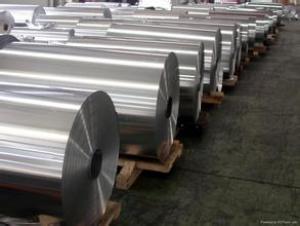Home Depot Decorative Aluminum Sheets - Aluminium Slab with Best Discount Price in Cheaper Price
- Loading Port:
- Shanghai
- Payment Terms:
- TT OR LC
- Min Order Qty:
- 8 m.t
- Supply Capability:
- 200 m.t/month
OKorder Service Pledge
OKorder Financial Service
You Might Also Like
Specification
1.Structure of Product Description
Cold rolled aluminum sheet is of construction field and decoration field, etc. There are many different grades, such as: 1000 series, 6000 series, 8000 series, 3000 series, etc.
2000 series, 3000 series, 5052,6063,8011, etc.
The temper is include H14, H22, H24, O, F, H44,H112,O, F,H114,etc.
2. Main features of the product
a. the best cheaper Competitive price
b.Frist-Class Service.
c. Shortest service.
3. Image.

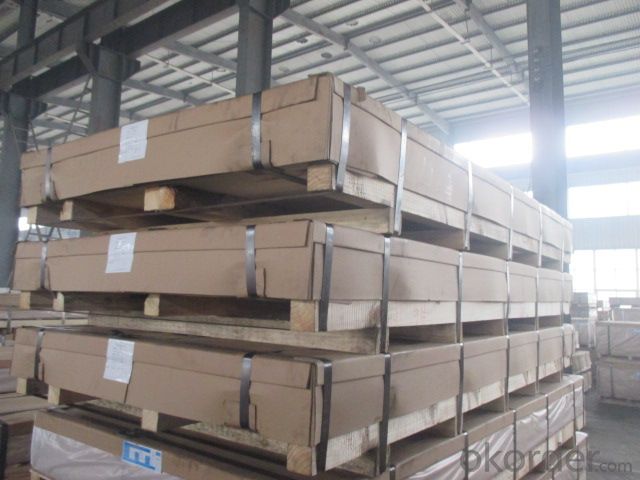
4. Product detailed sizes:
1000mm*2000mm,500*500, 600*600,1219mm*2438mm,1220mm*2440mm,
5. FAQ:
What is the quality standard?
---Usually our standard is GB3880-2006 or others.
What is the width range?
---It is from 400mm to 2500mm, etc.
---Normally it is from Japan, USA, fiji , sri lnala, bangladesh, etc.
ENGLISH, SINGAPORE, ETC.
What is your mainly products?
---Normally they are checkered sheet and mirror sheet, and else grades for different sizes of aluminum sheet, checkered sheet, mirror finish aluminium sheet, aluminum casting coil, etc.
- Q: What is aluminium oxide sheet?
- Brief introduction:Advantage:(1) good processing: anodized aluminum decorative strong, moderate hardness, easy bending forming, continuous high-speed, convenient and direct processing into products, no need for complicated surface treatment, greatly shorten the production cycle and reduce production cost.(2) good weather resistance: standard thickness of oxide film (3 m) anodized aluminum plate, indoor use for a long time, no discoloration, no corrosion, no oxidation, no rust. Anodized aluminum oxide film (10 m) can be used outdoors, and can be exposed to sunlight for a long time without discoloration.(3) strong sense: the metal surface of aluminum anodic treatment of high hardness, as gem, scratch resistance, surface is not covered with paint, keep aluminum metal color, highlight the modern sense of metal, improve product quality and added value.(4) high fire resistance: pure metal products, the surface without paint and any chemical substances, 600 degrees high temperature does not burn, does not produce toxic gases, fire protection and environmental protection requirements.(5) strong dirt resistance: no fingerprints, no stain marks, easy cleaning, no corrosion spots.(6) applicability: it is widely used in metal aluminum ceiling, curtain wall board, aluminum plastic panel, fireproof board, honeycomb aluminum plate, aluminum veneer, electrical panel, cabinet panel, furniture panel and so on.
- Q: How is the strength and durability of aluminum sheets determined?
- The strength and durability of aluminum sheets are determined through various tests and measurements such as tensile strength, hardness, impact resistance, and corrosion resistance. These tests help evaluate the ability of the aluminum sheets to withstand external forces, deformation, wear and tear, and environmental factors. Additionally, the composition and manufacturing process of the aluminum sheets also play a crucial role in determining their strength and durability.
- Q: What are the safety considerations when handling and working with aluminum sheets?
- When handling and working with aluminum sheets, it is important to consider a few safety precautions. Firstly, it is crucial to wear appropriate personal protective equipment, such as gloves and safety glasses, to protect against cuts and eye injuries. Secondly, aluminum sheets should be stored and handled in a way that prevents them from falling or causing any crushing hazards. Additionally, it is vital to be aware of the potential for sharp edges on the sheets and take caution to avoid accidental cuts. Lastly, when working with aluminum sheets, it is important to ensure proper ventilation to prevent the inhalation of any aluminum dust or fumes.
- Q: What is the most efficient and low cost method for welding 1mm-3mm aluminum sheet?,What's new?
- Bonding is also good if possible. Now there are many kinds of engineering adhesives, and the strength is good.
- Q: What is the typical thickness tolerance for aluminum sheets?
- The typical thickness tolerance for aluminum sheets can vary depending on the specific application and industry standards. However, in general, the accepted thickness tolerance range for aluminum sheets is typically within ± 0.005 to ± 0.015 inches. This means that the actual thickness of the sheet may vary within this tolerance range from the specified thickness. It is important to note that different industries may have different tolerance requirements based on the intended use of the aluminum sheet, so it is always advisable to consult the relevant industry standards or specifications for specific tolerance requirements.
- Q: What are the different methods of surface etching for aluminum sheets?
- There are several methods of surface etching for aluminum sheets, each with its own advantages and applications. Some of the most common methods include: 1. Chemical etching: This method involves using a chemical solution to selectively remove a thin layer of aluminum from the surface. The solution typically contains acids or alkaline substances that dissolve the metal, creating a textured or patterned surface. Chemical etching is precise and can achieve intricate designs, making it ideal for decorative or aesthetic purposes. 2. Mechanical etching: Also known as abrasive blasting or sanding, mechanical etching involves using abrasive materials such as sandpaper or wire brushes to physically remove the top layer of aluminum. This method is relatively simple and can be done manually or with the help of machinery. Mechanical etching is commonly used to create a uniform matte finish or to prepare the surface for further treatments, such as painting or coating. 3. Electrochemical etching: This method utilizes an electrical current to selectively dissolve the aluminum surface. The aluminum sheet is immersed in an electrolyte solution, and a direct current is applied through a stencil or mask to create the desired pattern. Electrochemical etching is commonly used for marking or labeling purposes on aluminum sheets, as it can produce clear, permanent, and highly precise designs. 4. Laser etching: Laser etching involves using a high-powered laser to remove the top layer of aluminum, creating a permanent and precise pattern on the surface. This method is highly accurate and can achieve intricate designs with sharp edges. Laser etching is commonly used for industrial applications, such as marking serial numbers, logos, or barcodes on aluminum sheets. 5. Photochemical etching: This method involves using a photosensitive material, known as a photoresist, to create a pattern on the aluminum surface. The aluminum sheet is coated with the photoresist, exposed to UV light through a stencil or mask, and then developed to remove the unexposed areas. The exposed aluminum is then etched away using a chemical solution. Photochemical etching is commonly used for producing high-resolution designs or microstructures on aluminum sheets. Each of these methods has its own advantages, depending on the desired outcome and application. It is important to consider factors such as precision, speed, cost, and complexity when choosing the appropriate surface etching method for aluminum sheets.
- Q: Can aluminum sheets be anodized in different finishes?
- Yes, aluminum sheets can be anodized in different finishes. Anodizing is a process that creates a protective oxide layer on the surface of aluminum, and this layer can be colored or finished in various ways to achieve different aesthetic and functional results.
- Q: i added aluminum sulfate to the soil from the bag with out mixing it with water and my hydrangeas look very sad. It burned them i guess... What is best thing to do to take some of it out or all if i can? will adding large amounts of water to the soil help it clear or will it make it worse? please before they die!!!10points!!!
- how much did you add i mix it with the soil for my hydrangeas and never have a problem.. blend it into the soil around the hydrangeas the burning you see may be related to something other than the aluminum sulfate
- Q: The furnace above is only hot enough to melt lead, but isn't hot enough to melt aluminum. I'm not looking for a blowtorch, or something too expensive or could melt gold, but just something that i can buy and is like the one above but isn't that expensive and can melt aluminum. Thanks!
- Aluminum melts below 1300F These gold and silver melters like the one in the link go to 2000F or more and should work for aluminum. I guess more small melters of metals want to melt gold and silver than aluminum.
- Q: Are aluminum sheets suitable for electronic enclosures?
- Yes, aluminum sheets are suitable for electronic enclosures. Aluminum is widely used in the manufacturing of electronic enclosures due to its excellent properties. It is lightweight, yet strong and durable, making it ideal for protecting electronic components. Aluminum also has good thermal conductivity, which helps dissipate heat generated by electronic devices. Additionally, it is non-magnetic and non-sparking, providing safety and preventing interference with electronic signals. Furthermore, aluminum can be easily formed, machined, and finished, allowing for customization and aesthetic appeal. Overall, aluminum sheets offer a reliable and cost-effective solution for electronic enclosures.
Send your message to us
Home Depot Decorative Aluminum Sheets - Aluminium Slab with Best Discount Price in Cheaper Price
- Loading Port:
- Shanghai
- Payment Terms:
- TT OR LC
- Min Order Qty:
- 8 m.t
- Supply Capability:
- 200 m.t/month
OKorder Service Pledge
OKorder Financial Service
Similar products
Hot products
Hot Searches
Related keywords
